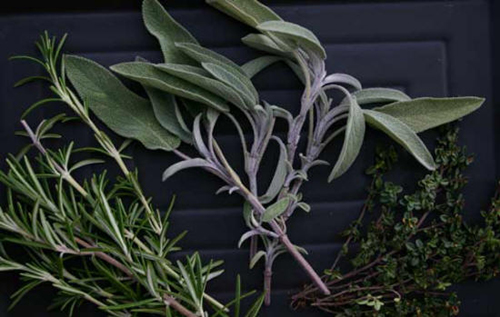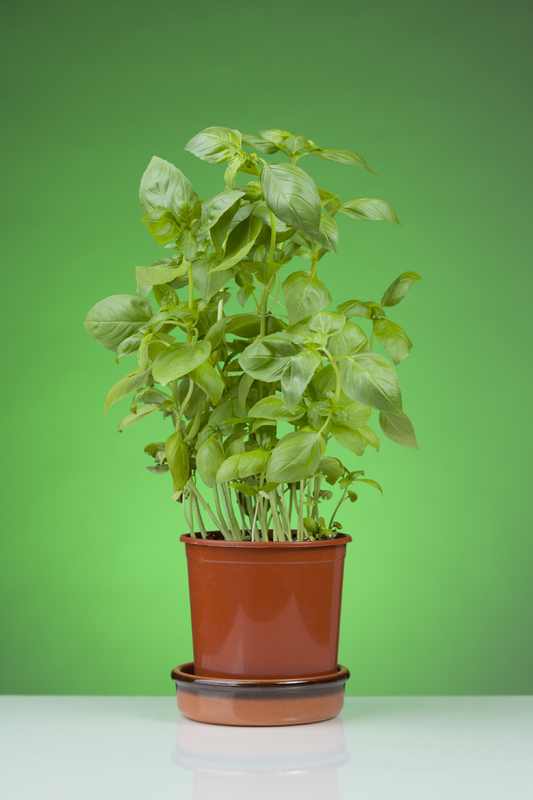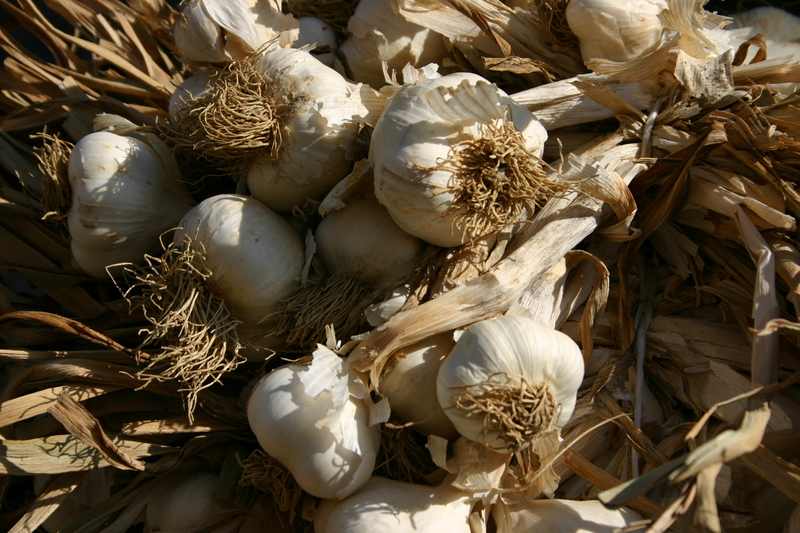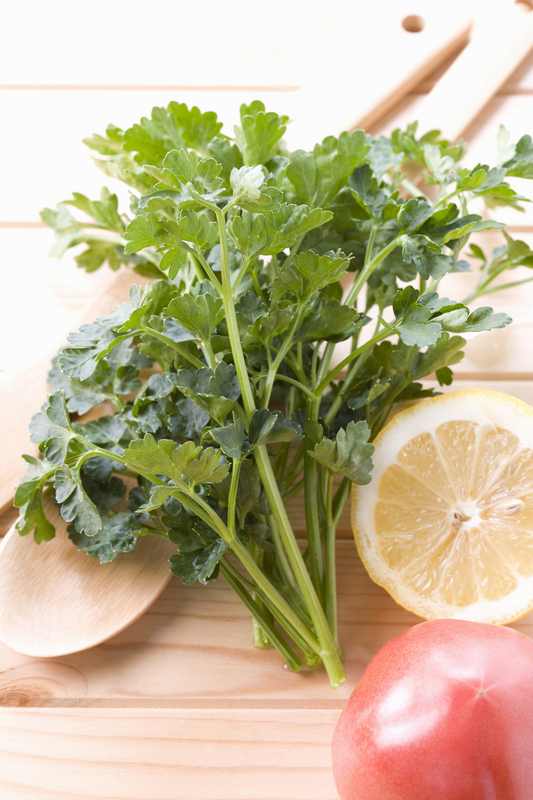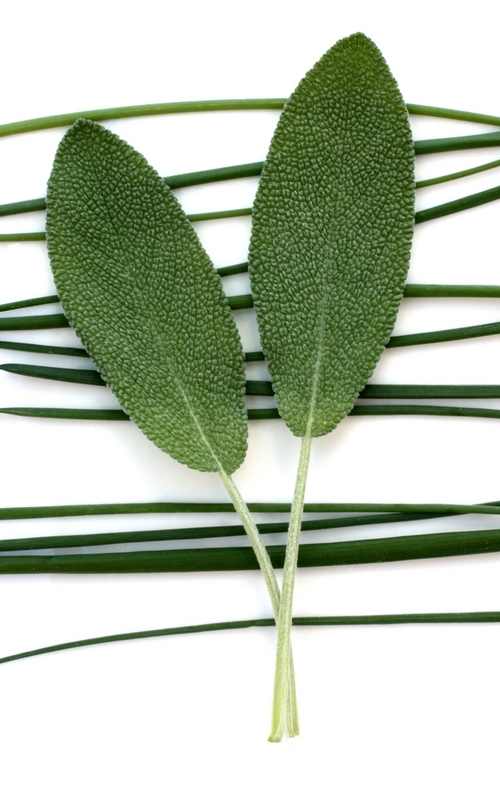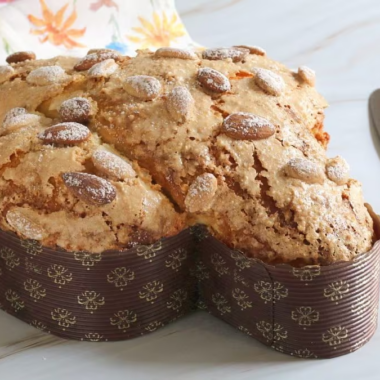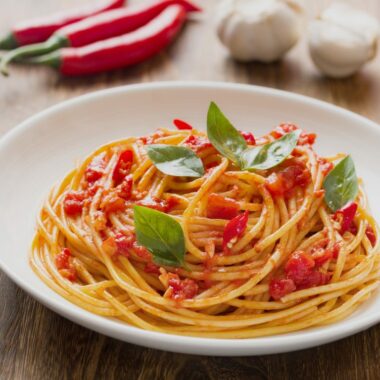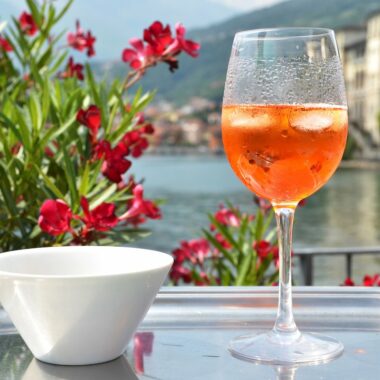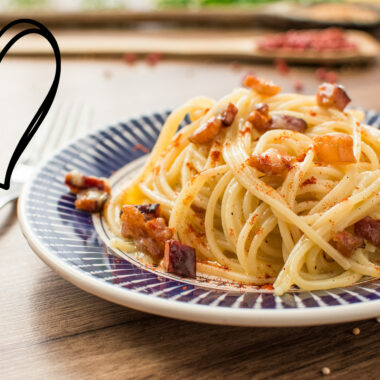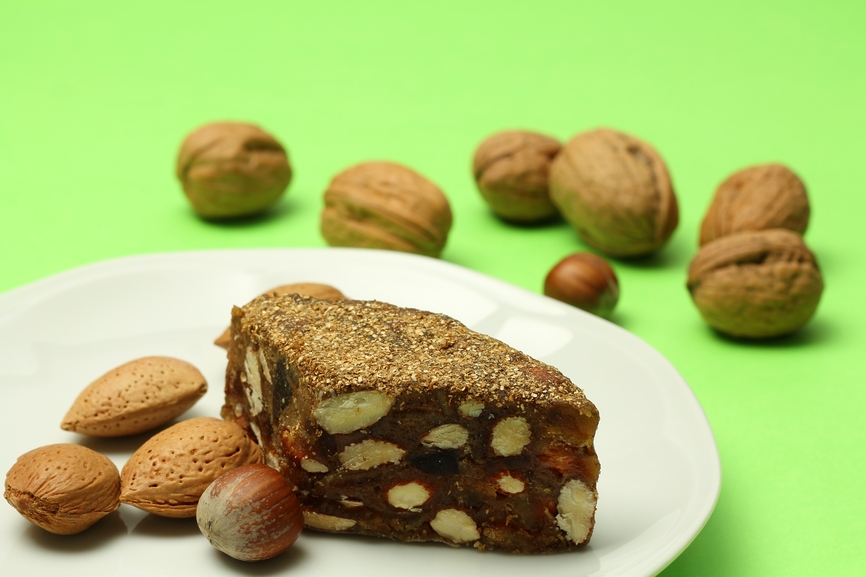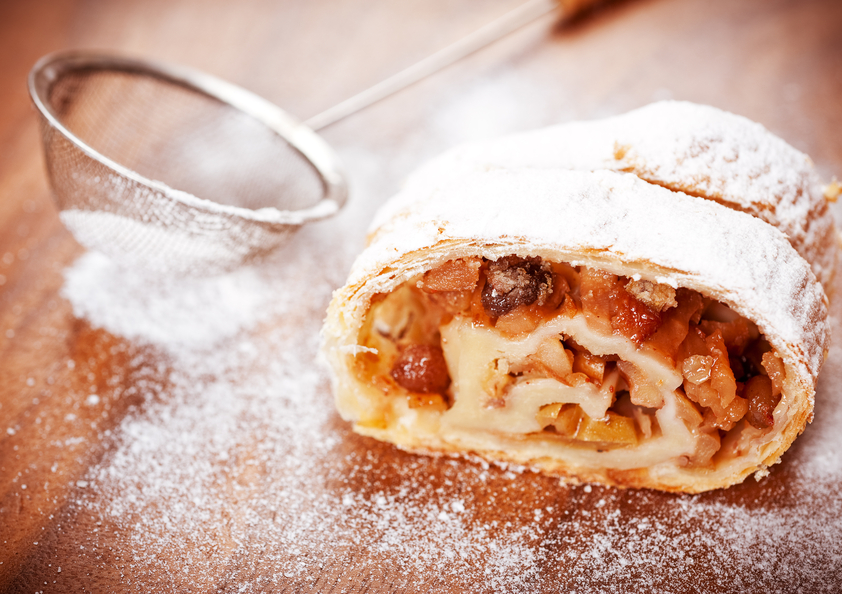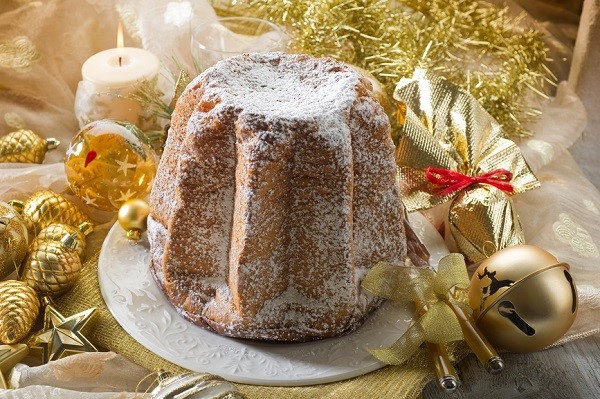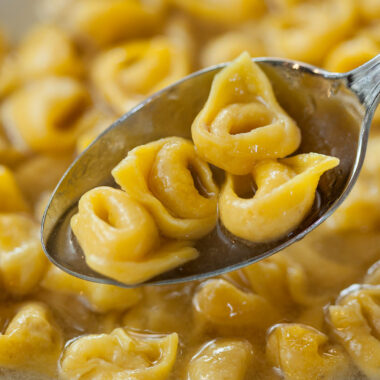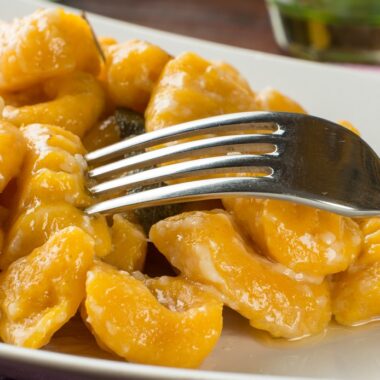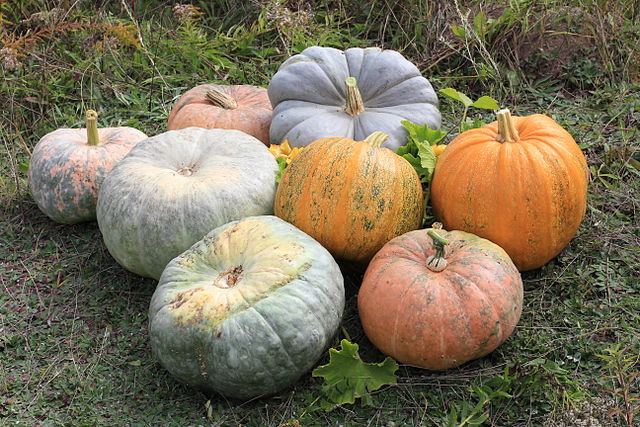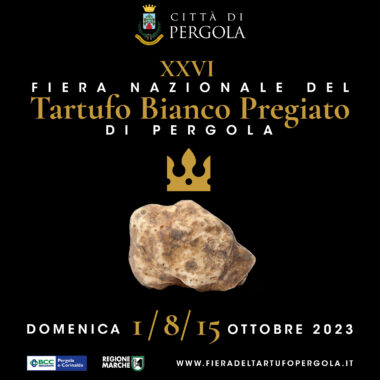It’s difficult to imagine Italian cuisine without the distinct flavor of fresh herbs. Indeed, the mere thought of Italian cooking brings to mind the aroma and taste of basil, oregano, rosemary, and garlic. Planting and cultivating your own herb garden is simple, and will provide you with your own steady supply of fresh herbs for use in your kitchen.
Herb Garden: Basil
Basil is an essential herb in Italian cooking. Crushed basil leaves combined with oil, garlic, and pine nuts create a delicious pesto sauce. Basil is the perfect compliment to the flavor of tomato sauce, and works well in pasta dishes. Fresh basil is also commonly added to sauces, marinades, and soups.
The most common variety of basil is Sweet Italian Large Leaf, although Genovese Basil is used in authentic pesto. For either variety, plant the seeds in a sunny location to get the best crop. Seeds can also be started indoors in small pots and transferred directly into your garden. To keep your basil growing out (rather than up), trim the flower buds below the node, keeping the tall stalks at a minimum.
Harvest the leaves just before the plants actually flower, for the best flavor and most pungent aroma. After cutting your basil, it will keep fresh for up to one week if you store it with the stalks immersed in a cup of water at room temperature. Hang sprigs in a cool, dry place to dehydrate your herbs for long-term storing.
Herb Garden: Fennel Seeds
Fennel seeds are added to meatballs and Italian sausage, and lend a distinctive flavor to roasted meat or fish. For even more flavor, toast the seeds lightly before adding them to your recipes.
Fennel grows spontaneously in many regions of Italy, but if you want to add it to your herb garden, choose the location wisely. If the seeds aren’t harvested quickly, they will fall and replant themselves, and potentially take over the less resilient herbs in your garden. Fennel should be planted in a sunny spot with well-drained soil. It’s a hearty plant that will do well no matter the weather, but take care that it doesn’t get over watered.
Harvest fennel seeds as soon as the flowers start to turn brown. For best storage, put the seeds in a brown paper bag and store them in a cool, dry place. The white bulb of the fennel plant is delicious in its own right, and is found in many traditional Italian recipes.
Herbs Garden: Garlic
Italian cuisine just wouldn’t be the same without garlic! Garlic cloves can be planted directly, pointy side up, and will thrive just about anywhere in your garden with very little attention. Plant them in the fall for a rich crop the following summer.
Garlic is ready to harvest when the tops start to turn brown and fall over. Let your garlic bulbs dry in the sun for a few hours before storing in a nylon or mesh bag. It will keep best if there is air circulating around it. For long-term storage, you can freeze the individual cloves or pickle them to store in the refrigerator. It is not recommended to store garlic in oil, as bacteria can grow easily and spoil your harvest.
Herbs Garden: Oregano
Another herb used widely in Italian cooking is oregano. Oregano offers a complimentary flavor to basil, and is widely used in tomato-based dishes, with meat or fish, and in salads. It also tastes wonderful with beans or eggplant, and in risotto.
Oregano is best planted from root divisions or with stem cuttings from existing plants. Make sure your plants get a lot of sunlight and rest in well-drained soil that isn’t too rich. The more sun the leaves get, the stronger the flavor they will provide. Harvest your oregano leaves just before the flowers bloom, when the buds are fully formed. Trim back any dried or dead leaves as the plants grow.
Fresh oregano leaves can be stored in water with the same method as fresh basil, or dry the leaves for long-term storage.
Herbs Garden: Parsley
Flat-leaf Italian parsley is much more flavorful than the curly, decorative variety, and is used in soup stock and with vegetable dishes. It can also be added to marinades for grilled meat or fish.
Parsley seeds can be planted in direct sunlight or in light shade. The leaves from the first years’ plants will be the most flavorful, so for best results plant two different crops, one year apart. The second years’ crop will have fewer leaves, but will provide a good deal of blooms and seeds that can germinate on their own if allowed to do so.
Harvest your parsley when the plants reach six inches in height. Cut the leaves and as much of the stem as you can, as the stems provide a lot of flavor. Fresh parsley is best, but you can chop and dry it, or freeze it for later use.
Herbs Garden: Rosemary
The aroma of fresh rosemary is sure to make your mouth water for Italian roasted lamb with potatoes. This herb makes a wonderful addition to roasted meats and vegetables, and is extremely tasty added to focaccia.
Rosemary can be planted from seed or cuttings. Choose a well-drained spot in your garden with exposure to sunlight. The shrubs will grow with little attention from you – as a matter of fact, too much watering or fertilizing is sure to kill your rosemary plants. Clip the shrubs back as much as you like. Rosemary is such a hearty herb that it will continue to grow in humid, warm spots for up to thirty years.
The leaves of the rosemary plant resemble pine needles, and are bluish green in color. Harvest the leaves as often as you’d like, and use them fresh for cooking. They can also be hung in a cool, dry place to dry out. Strip the dried leaves from the stems for culinary uses, or use the sprigs to scent a room, closet, or drawer. Dried rosemary also makes a soothing tea or a comforting bath soak.
Herbs Garden: Sage
Another herb that is delicious with meat dishes is sage. Sage is the star herb in Italian saltimbocca, and can also be added to salads and dressings. It makes a perfect addition to stuffing for poultry, pork, veal, and lamb. Its aroma is reminiscent of genuine comfort food, home made and satisfying.
Use seedlings or cuttings from existing sage plants for your garden; sage seeds are generally unreliable and take a long time to germinate. Plant them in partial sunlight, and don’t let the plants get too dry. As your sage plants grow, trim them back to keep them from getting woody, and to encourage new shoots, which have the best flavor.
Harvest sage before it blooms. Trim off the stems and strip the leaves to use fresh, or hang the stems to dry. Sage leaves are fairly thick, so they will not dry hard and crumbly like other herbs. Chop or crush the leaves to use for cooking. For something a little different, try dried and crushed sage with potatoes, or substitute sage for the traditional rosemary in focaccia bread.
All of these herbs are easy to plant and will thrive with a bit of attention and care. There are many other uses for herbs, such as making teas, bath and body products, and home remedies for everything from indigestion to headaches. Create an aromatic and beautiful herb garden in your own back yard, and discover the joys of having fresh herbs at your fingertips!
By Carrie Grosvenor
See also:

